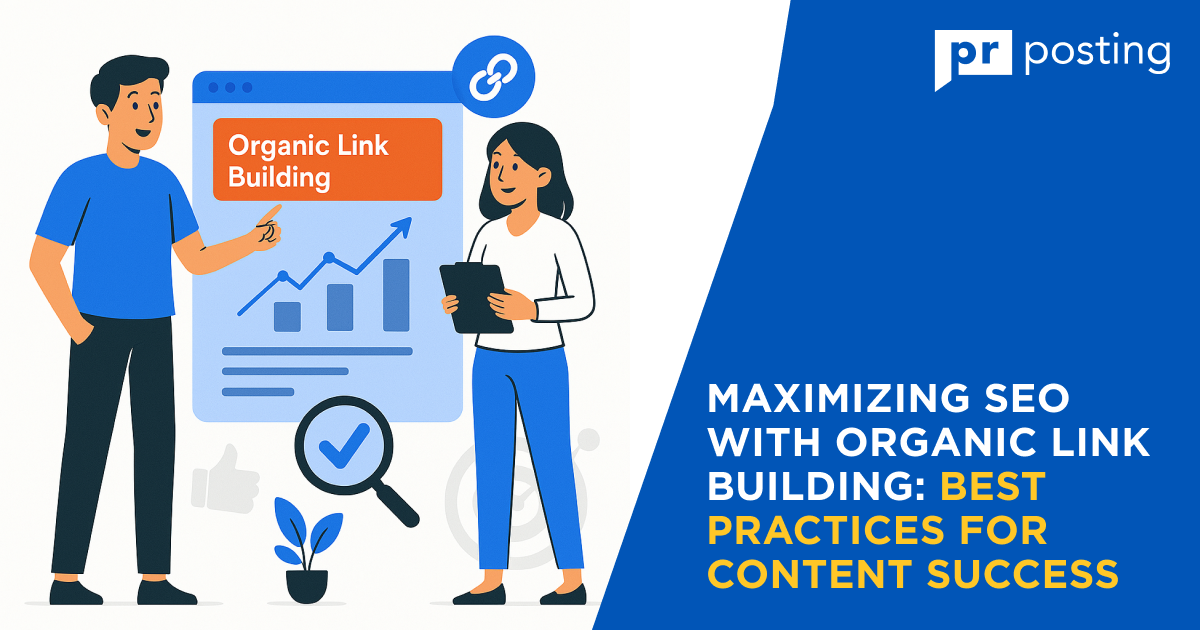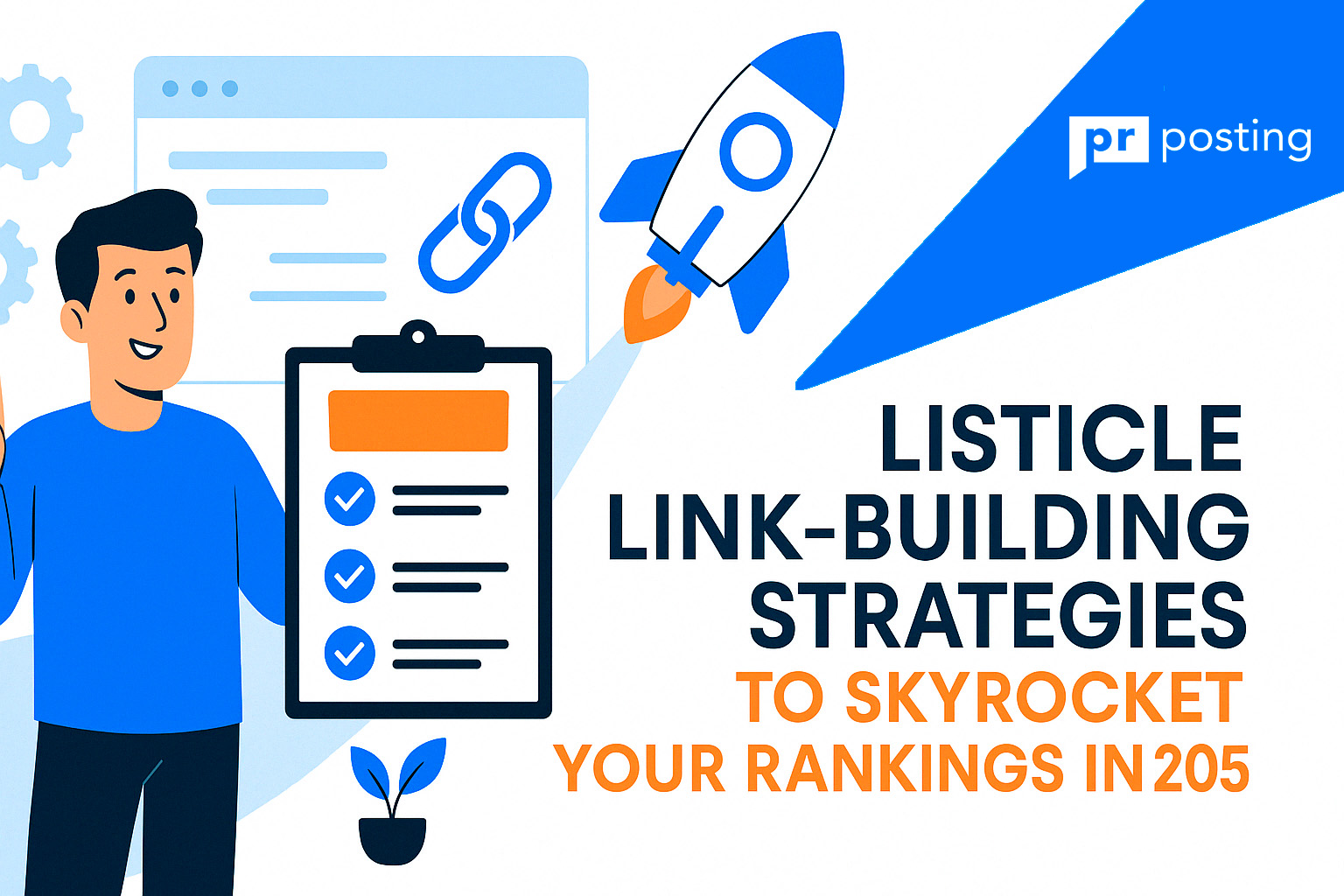How to Get More Traffic with White Label Link Building

This article covers:
- The meaning of white label link building;
- How agencies benefit from outsourcing link-building work;
- Ways to improve rankings using third-party providers.
What Is White Label Link Building?
White label link building means outsourcing link building tasks to a third party. The agency sells these services under its brand. The client only sees the results, not the provider behind them.
Role of Third-Party Service Providers
Specialized providers handle link placements. They research, contact websites, and secure high-quality links. Agencies rely on these services to improve rankings for their clients.
White-Label Reports
White-label reports give clients insights without revealing the third-party provider. These reports list acquired links, anchor texts, and placements.
Why Agencies Use White Label Link Building
Saving Time and Resources
- Finding high-quality links takes time.
- Outreach efforts require skilled negotiation.
- Agencies avoid the workload by outsourcing link-building tasks.
Focus on Core Services
- SEO agencies manage multiple services.
- White label link building solutions free them from manual link-building work.
- This lets them prioritize strategy and client relationships.
Scalable and Efficient SEO Solutions
- Agencies can request more links based on demand.
- No need to hire an in-house link-building team.
- White label link building services deliver consistent results.
- The process adapts to client needs without extra effort from the agency.
Outsourcing link building keeps agencies competitive. It ensures high rankings, a stronger online presence, and steady growth.
White-Label Link-Building Strategies
Boosting rankings with smart white label link building methods requires a clear plan. Strong backlinks bring more visitors and improve search engine positions. Many agencies use white label link building solutions to get links without extra work. This approach saves time and provides steady results. Below are four proven methods that improve link building success.
1. Content Creation
A good strategy starts with useful content. High-quality articles, guides, and infographics attract backlinks naturally.
- Why content matters. Search engines rank sites higher when they have valuable content.
- How content earns links. People share and link to helpful, well-researched pieces.
- Best practices:
- Use original data or insights.
- Write in-depth guides on popular topics.
- Include images and videos to improve engagement.
2. Competitor Analysis
Checking competitors’ backlinks helps agencies find link opportunities. Studying successful competitors reveals useful ideas.
- Find top competitors. Use SEO tools to list top-ranking websites.
- Analyze backlink sources. Identify where their backlinks come from.
- Steps to secure links:
- Reach out to the same sites with better content.
- Offer valuable guest posts.
- Use guest posting outreach to build credibility.
3. Interaction with Additional Competitors
Not all competitors are direct rivals. Some businesses target different audiences but work in the same field. Partnering with them helps both sides gain links.
- Find indirect competitors. Look for businesses that offer related services.
- Exchange links smartly. Link to each other’s content where relevant.
- Example partnerships:
- A content agency linking to an SEO tool provider.
- A marketing blog exchanging links with an analytics platform.
4. Social Media Engagement
Social media helps increase content visibility and backlink potential. Active participation leads to more shares and natural links.
- Why does social media matter? Popular posts attract attention from bloggers and journalists.
- How to share effectively:
- Post regularly on LinkedIn and Twitter.
- Use relevant hashtags to reach a wider audience.
- Engage with influencers who may share your content.
- Best platforms for backlinks:
- LinkedIn for professional connections;
- Twitter for industry trends;
- Reddit for niche discussions.
Using white label link building solutions helps agencies scale their efforts. Four strategies ― content creation, competitor analysis, link reciprocity, and social media engagement ― provide effective ways to gain backlinks. Smart link building improves site authority and brings lasting benefits.
Boost SEO with Smart White-Label Link-Building Strategies
White label link building helps agencies grow without extra workload. It lets businesses improve search rankings using expert services. Strong backlinks increase credibility and bring more visitors. This guide covers key white label link building solutions that work.
Broken Link Building
Broken links weaken a site’s quality and user experience. Fixing them creates new link-building chances.
Finding Broken Links on Competitor Sites
- Use SEO tools to scan competitor pages.
- Look for outdated or removed resources.
- Check high-traffic pages with missing links.
Creating Replacement Content
- Match the topic of the broken link.
- Ensure the content provides more value.
- Use statistics, case studies, or new insights.
Effective Outreach Techniques
- Contact site owners with a direct offer.
- Explain the broken link’s issue.
- Provide your link as a simple fix.
Using Infographics for Link Building
Visual content attracts links and shares. Image link building improves site authority.
Why Infographics Attract Backlinks
- Data-driven graphics simplify complex ideas.
- People share visuals more than text.
- Popular blogs prefer easy-to-digest content.
Finding Influencers to Share Your Content
- Identify bloggers who publish industry reports.
- Look for journalists needing quick facts.
- Use social media to connect with content creators.
Best Practices for Infographic Marketing
- Make visuals clear and data-rich.
- Use a simple yet eye-catching design.
- Add an embed code for easy sharing.
Image Link Building
Image link building turns visual content into backlink opportunities. Unique graphics, infographics, and photos attract website citations.
How Unique Images Attract Backlinks
- High-quality visuals enhance user experience.
- Websites prefer original images over stock photos.
- Infographics encourage organic sharing.
Reverse Image Search
- Use Google Reverse Image Search to find uncredited images.
- Contact sites using images without linking.
- Request proper attribution with a backlink.
Contacting Sites Using Your Images
- Locate unauthorized image usage.
- Send a polite outreach email.
- Offer credit guidelines with a preferred backlink.
- Track responses and follow up if necessary.
By applying white label link building solutions, agencies enhance client SEO strategies. These tactics increase visibility, improve rankings, and strengthen authority. Using guest posting and image link building, businesses gain long-term search benefits.
Niche Edits for Quality Backlinks
Niche edits place links into existing content. They offer faster results than new posts.
What Are Niche Edits?
- Adding links to relevant, outdated articles.
- Using authority of well-ranked pages.
- Gaining organic traffic without creating new content.
How to Find Placement Opportunities
- Analyze blogs with strong backlink profiles.
- Identify content matching your industry.
- Offer valuable suggestions.
Organic vs. Local SEO Benefits
- Organic niche edits boost search rankings globally.
- Local edits improve visibility in specific areas.
- Both methods build trust with search engines.
These strategies help agencies scale white label link building solutions. High-quality backlinks bring steady traffic and better rankings. Apply these methods for long-term SEO success.
Benefits of White Label Link Building
Why Agencies Choose White Label Link Building
- High-quality links from trusted sources;
- Lower costs than in-house teams;
- Strengthened agency branding;
- Faster link-building results.
How do agencies get these links?
- Experts reach out to authoritative sites.
- Content is created to attract links.
- Relationships with publishers improve placement opportunities.
This process ensures sustainable rankings. Without strong links, websites struggle to grow.
Cost Efficiency
Hiring an in-house team costs more. The best white label link building services charge only for completed work. Agencies avoid salaries, software fees, and training costs.
Comparison:
- In-house link building: High salaries, slow scaling.
- White label link building: Lower costs, fast delivery.
This setup gives agencies flexibility. They scale link-building efforts as needed.
Brand Building
Clients see the agency’s name, not a third party. White label link building solutions keep branding consistent. Agencies sell link building as their own service.
Benefits:
- Agencies keep full control over client relationships.
- Services appear seamless under the agency’s brand.
- Clients see steady results without outside interference.
This builds trust and long-term loyalty.
Faster Results
Established white label link building solutions move quickly. They have outreach systems in place. Agencies see results faster than with in-house teams.
Why?
- Agencies skip the learning curve.
- Experts handle outreach, content, and placements.
- Relationships with sites speed up link approvals.
White label link building simplifies growth. Agencies get strong links, reduce costs, and improve client satisfaction.
Risks and Scams in Link Building
Building links can increase search rankings, but risks exist. Many services promise quick results but use poor methods. These tactics can damage a site’s credibility. Learning how to spot link building scams helps protect your online presence.
Some providers offer white label link building solutions, but not all deliver real value. Checking link sources and quality helps avoid penalties.
Common Link Building Scams
Some link sellers use risky tactics. These links may offer short-term gains but harm rankings over time.
Link Farms
- Websites filled with outbound links to various domains.
- No real audience, just automated link exchange.
- These links hold no real authority and weaken rankings.
Low-Quality Directories, Comments, and Forums
- Automated submissions to hundreds of low-value sites.
- Links lack relevancy and often disappear quickly.
- Spammy links can reduce search visibility.
Fake Guest Post Services
- Some sellers promise real guest posting outreach but deliver spam.
- Links placed on irrelevant or low-traffic websites.
- Content is often copied or poorly written.
Unproven Link Builders
- No track record or verified results.
- Often use broken link building techniques or black-hat methods.
- No transparency on how links are obtained.
In-House vs. White Label Link Building
Growing a website’s visibility takes time, skill, and resources. Businesses often choose between hiring an in-house team or using white label link building solutions. Each approach has strengths and weaknesses. Understanding the differences helps agencies make informed decisions.
In-House Link Building
Managing link building internally offers control but requires significant effort. Many businesses struggle with costs, expertise, and scalability.
High Costs
Building a dedicated team means:
- Paying salaries for specialists;
- Purchasing SEO tools;
- Investing in training.
These expenses can strain smaller agencies.
Limited Expertise
An in-house team may lack experience in:
- Guest posting outreach;
- Broken link building techniques;
- Image link building.
This limits opportunities for high-quality backlinks.
Time-Consuming Process
Internal teams must handle:
- Researching link prospects;
- Crafting outreach emails;
- Creating compelling content;
- Tracking backlink performance.
These tasks require ongoing effort.
Scaling Difficulties
Expanding link-building operations internally presents challenges:
- Hiring and training take time.
- Workloads increase with client demand.
- Maintaining quality becomes harder.
Scaling up often leads to bottlenecks and slower progress.
White Label Link Building
Many agencies choose white label link building services to improve efficiency. These services provide expert solutions without the need for an internal team.
Cost-Effective Solution
Agencies save money by outsourcing:
- No need for full-time staff.
- No investment in SEO tools.
- No ongoing training costs.
Agencies pay for results instead of overhead expenses.
Specialized Expertise
White-label providers focus on:
- Content based link building;
- Guest posting outreach;
- Image link building;
- Broken link building techniques.
This ensures high-quality backlinks from relevant sites.
Faster and More Efficient Execution
Established providers streamline the process:
- Identifying quality link sources;
- Managing outreach efficiently;
- Producing link-worthy content;
- Delivering measurable results.
Agencies get better links in less time.
Scalability and Flexibility
Outsourcing allows agencies to:
- Handle more clients without expanding staff;
- Adjust services based on demand;
- Focus on core business activities.
White-label providers adapt to an agency’s needs.
Choosing the Right Approach
Every agency has unique needs. In-house link building offers control but demands time and resources. White label link building solutions provide expertise, efficiency, and scalability. Agencies seeking faster growth often benefit from outsourcing.
White Label Link Building Process
Why Choose White Label Link Building Solutions?
- Save time and resources with expert support.
- Access premium sites for high-quality backlinks.
- Improve client results without expanding your team.
- Scale operations easily.
Step 1: Order Submission
The process begins when an agency submits a detailed order. Here’s what this step involves:
- Define client goals and desired outcomes.
- Specify target pages for link placement.
- Outline preferences for anchor text.
- Provide competitor insights for benchmarking.
Accurate details ensure effective execution.
Step 2: Link-Building Package Selection
Selecting the right package is crucial for maximizing results. Agencies can choose based on:
- Budget. Packages vary to suit different financial plans.
- Niche Relevance. Ensure site selection matches the industry.
- Link Quality. Prioritize placements on authoritative websites.
- Turnaround Time. Choose options aligned with campaign timelines.
The best white label link building services often offer customizable plans.
Step 3: Anchor and URL Submission
Next, agencies provide target URLs and preferred anchor texts. Keep these guidelines in mind:
- Use descriptive, keyword-rich anchor texts.
- Avoid overusing exact-match keywords.
- Diversify anchor text variations.
- Prioritize relevance over quantity.
This step helps ensure natural and effective link profiles.
Step 4: Research and Prospecting
Experienced specialists search for relevant sites. They consider factors like:
- Domain authority and trustworthiness;
- Audience relevance;
- Existing outbound links;
- Content quality and publishing frequency.
Content based link building ensures placements on valuable, reputable platforms.
Step 5: Approval Process
Some agencies prefer reviewing the selected websites before publishing. The approval stage involves:
- Examining the site’s content alignment;
- Assessing past linking practices;
- Ensuring transparency in pricing and deadlines.
Choosing this optional step gives agencies greater control over campaign outcomes.
Step 6: Outreach and Placement
Reaching out to site owners is essential for successful placements. This phase involves:
- Crafting personalized emails for higher response rates;
- Explaining the value of the proposed link;
- Building trust by referencing relevant content;
- Following up respectfully to increase responses.
Guest posting outreach remains an effective choice. It helps agencies secure placements on authoritative websites.
Step 7: Initial Link Delivery and Payment
After placement, agencies receive a report detailing the secured links. Here’s what to expect:
- Link Confirmation. Agencies verify the live links.
- Quality Assessment. Links undergo a quality check.
- Payment Processing. Payment is completed upon link confirmation.
- Transparency. Agencies stay informed through comprehensive reports.
Partnering with the best white label link building services ensures accurate and timely reports.
Step 8: Final White Label Report
Agencies receive a detailed white label link building report. It typically includes:
- Link URLs and anchor text;
- Domain authority metrics;
- Traffic insights;
- Publication dates.
This report is easy to share with clients under the agency’s branding.
Conclusion
White label link building solutions offer agencies a practical way to enhance client results. The step-by-step approach ensures smooth implementation from outreach to reporting.
Choosing reputable providers prevents issues like low-quality links or delayed results. Agencies can scale their content based link building efforts without overloading internal resources.
Ready to strengthen your SEO strategy? Explore trusted white label link building solutions and see measurable growth.




